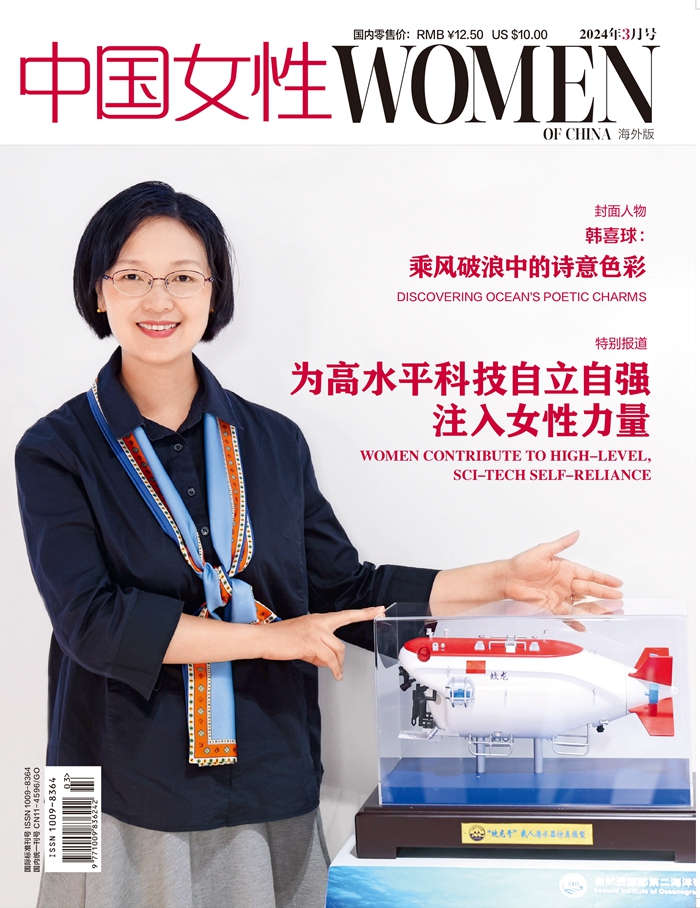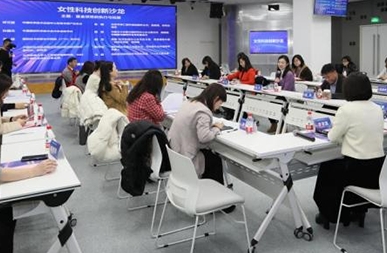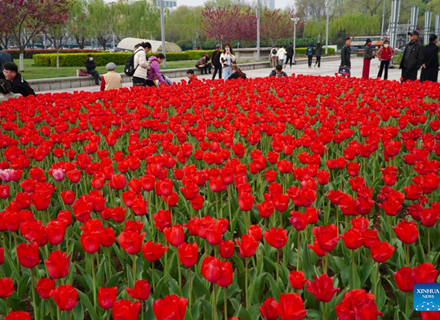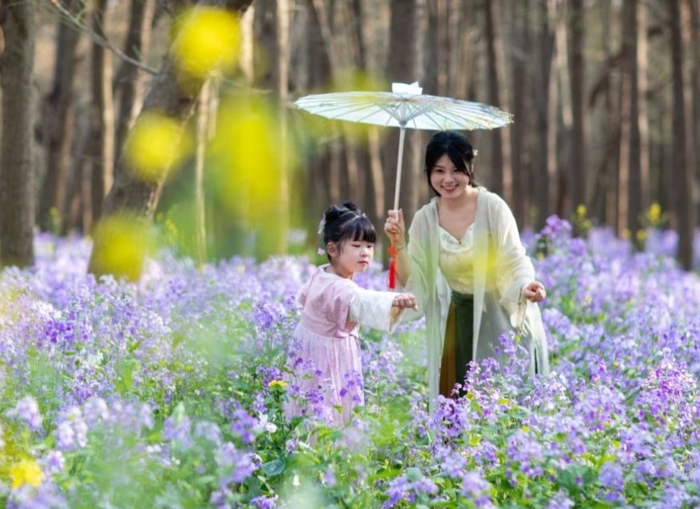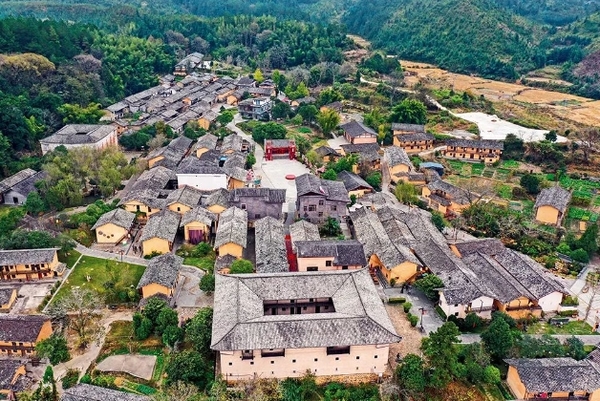
Ganzhou, a city in east China's Jiangxi Province, has a history of more than 2,200 years. Ganzhou is home to the largest population of Hakka people (migrants in southern China who originated from regions adjacent to the Yellow River) in the world. Dubbed "the cradle of Hakka culture," the city is the birthplace of Hakka culture.
Ganzhou is in southern Jiangxi Province, where Jiangxi borders southeast China's Fujian Province and south China's Guangdong Province. Due to its geographic position, it was a political, economic, cultural and military center in the southern region of the Yangtze River. In 1994, it was designated a national historical and cultural city by the State Council, the central government's cabinet.

Unique Dwellings
Hakka (literally meaning "guest families") people form a subgroup of the Han Chinese nationality, and the Hakka people live predominantly in the provinces of Jiangxi, Fujian and Guangdong. To escape wars and natural disasters, the ancestors of the Hakka people migrated from regions adjacent to the Yellow River, on a large scale, during the Eastern Jin Dynasty (317-420). Many of those migrants settled in Ganzhou. During the Tang (618-907) and Song dynasties (960-1279), some of the settlers' descendants migrated southward, and they settled down in the provinces of Fujian and Guangdong. Meanwhile, more people migrated to southern China from central China. These settlers were formally named Hakka people during that period. During the following hundreds of years, some of the Hakka people migrated to other southern areas, such as Sichuan Province and Guangxi Zhuang Autonomous Region. Some even immigrated to other countries. Now, there are nearly 100 million Hakka people around the world, in more than 80 countries.
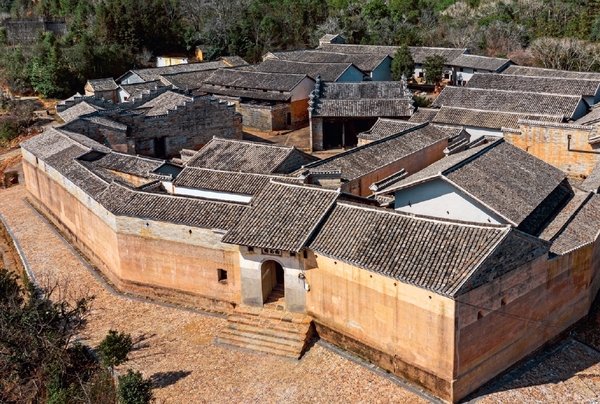
During their migration, the Hakka people adapted to the local environment of southern China, and they developed their own, unique culture, including language, customs and dwellings. As it was the first stop of their migratory route, Ganzhou has come to be known as "the cradle of Hakka culture."
Weiwu, or enclosed house, is the traditional residential building of the Hakka people in Ganzhou. The enclosed house, an icon of Hakka culture, dates back to the Ming Dynasty (1368-1644). People of the same clan lived together in the enclosed house. A large-scale house could inhabit hundreds of people. More than 600 enclosed houses remain in the city. Most of the houses are rectangular, but some are circular. They are usually large, enclosed and fortified earthen buildings with thick, load-bearing walls, like mini fortresses. There are many small holes on the walls, through which guns can be fired. Dubbed "ancient Oriental castle," the houses have strong defense capabilities.
Longnan, a county-level region, is situated in the southernmost area of Ganzhou. Longnan has more than 360 enclosed houses, most of which date back to the Ming and Qing (1616-1911) dynasties. Among them, Guanxi New Enclosed House is the most famous. Covering more than 7,400 square meters, it is the largest, best-preserved, rectangular-shaped enclosed house in the city.
Xu Mingjun, a rich businessman in the region, began constructing the house in 1798, during the reign of Emperor Jiaqing (1760-1820), of the Qing Dynasty. The house was completed in 1827, during the reign of Emperor Daoguang (1782-1850), of the Qing Dynasty. The house has many functional zones — defense zone, ancestral hall, residential zone, family school and leisure zone (a theater stage and a large garden). The enclosed house has a unique architectural style, and that combined with the profound historical and cultural deposits, make it a famous tourist attraction, for people from home and abroad.
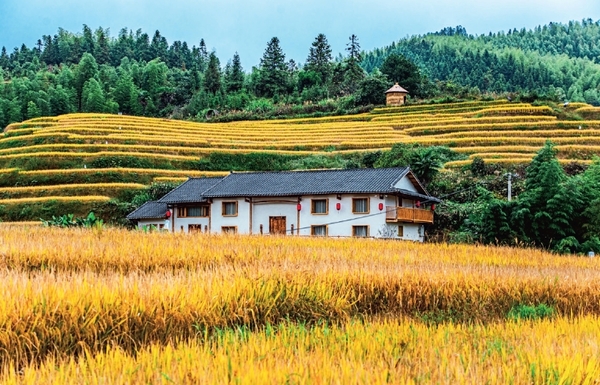
Historic Irrigation Engineering System
Shangbao Terraces is located in the mountainous area of Chongyi, a county in Ganzhou. Covering nearly 3,400 hectares, they are recognized as the "largest Hakka terraces in the world." Its highest altitude is 1,260 meters, and the lowest altitude is 280 meters. According to Shan Hai Jing (Classic of Mountains and Seas, ancient Chinese literature), the terraces trace back more than 2,200 years. The locals began building the terraces during the pre-Qin Period (pre-221 BC). The terraces were expanded and refined during the following 2,000 years. They were completed during the Qing Dynasty.
The terraces show the scientific farming culture of the Hakka ancestors, who lived in harmony with nature. The locals followed the law of nature, and they built an irrigation engineering system that accorded with local natural conditions. They produced luxuriant trees, on top of the terraces, to help conserve water resources and prevent soil erosion. They built terrace steps along the slopes, to help preserve soil and water. The streams, flowing down the hills, from step to step, have provided a natural irrigation system. They built dams, reservoirs and other facilities to control water and prevent floods and droughts. The system not only helped irrigate the farmland, but also helped protect the ecological environment. The ancient irrigation system has been well preserved, and it has continued to support the local rice-planting industry.
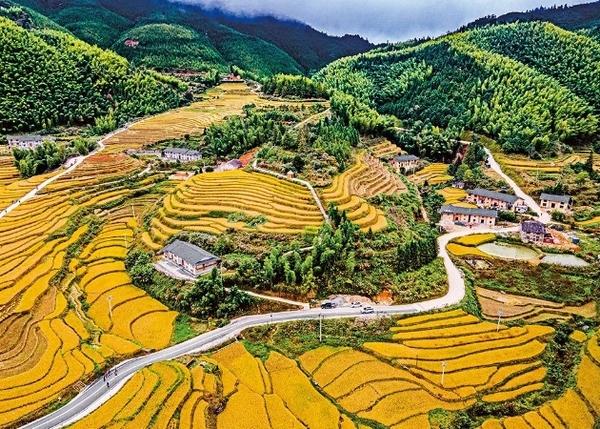
In 2018, Shangbao Terraces was added to the list of Globally Important Agricultural Heritage Systems by the Food and Agriculture Organization of the United Nations. As a model of a sound irrigation and ecological system, it was added to the list of the World Heritage Irrigation Structures, by the International Commission on Irrigation and Drainage, in October 2022.
Photos from VCG and Tuchong
(Women of China English Monthly December 2023 issue)
32.3KPlease understand that womenofchina.cn,a non-profit, information-communication website, cannot reach every writer before using articles and images. For copyright issues, please contact us by emailing: [email protected]. The articles published and opinions expressed on this website represent the opinions of writers and are not necessarily shared by womenofchina.cn.

